Make Life Easier with Good Class Procedures
A MiddleWeb Blog
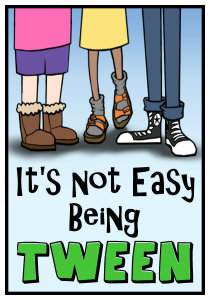 Every year, thousands of teachers new to the profession enter their own classroom for the first time. Along with the exhilaration can come a feeling of absolute terror about what they have gotten themselves into.
Every year, thousands of teachers new to the profession enter their own classroom for the first time. Along with the exhilaration can come a feeling of absolute terror about what they have gotten themselves into.
For middle school newbies, teaching young adolescents can feel like the most mysterious career choice of all. They’re known to be an especially challenging age to teach, but teachers like me who have spent the majority of their careers teaching tweens will tell you that it’s the best job in the world. (In fact, I did that here.)
To help calm any fears new middle school teachers have, one resource that I highly recommend is the 2003 book Day One and Beyond: Practical Matters for New Middle-Level Teachers by the brilliant Rick Wormeli. Truly an oldie but a goodie.
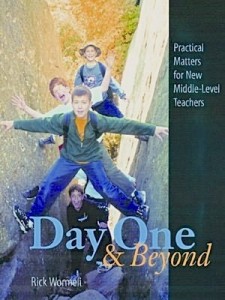
In addition to Mr. Wormeli’s indispensible text, nearly every resource for new teachers stresses the importance of establishing classroom routines and procedures early on, because it’s just that important.
Establishing routines is like dieting . . .
Establishing teaching routines and procedures is kind of like choosing a diet. You talk to friends and read about people who have successfully lost a great deal of weight and discover tips that worked for them. Then, perhaps after some experimentation, you put together the best approach for you.
Determining classroom routines is a similar task. While one person may find a strict regimen of artful record keeping a must, another may find that a brief outline kept on one legal pad is sufficient. And just as many different diets can help a person lose weight, a variety of routines tailored to the individual teacher’s nature will be successful in managing a classroom.
It’s probably time to tweak
If you are reading this four to six weeks into the new school year, you probably have enough experience to start tweaking the routines you already have in place and adding some new ones that may boost your effectiveness and student learning.
Over the years, I have tried dozens of ideas to determine what routines work best in my classroom. Something I learned by testing ideas that sounded promising is that I would only be successful with those that worked with my personality and teaching style.
I am not an especially regimented person, so I’ve never been good with a long list of precise procedures or record keeping tasks. But through trial and error I have found a few routines that work well, and I would like to share them and ask for you to share what’s working for you in return.
Remembering classroom materials
Over my many years of teaching, one thing that became abundantly clear is that arriving to class with a pencil and paper is a monumental task for some middle schoolers. At first I bought into the griping of several colleagues that kids were just irresponsible and the myriad ways those teachers had to deal with miscreants who didn’t have a pencil – most involving some degree of humiliation or inconvenience.
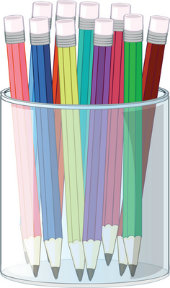
Instead, I have a tray where I keep a small supply of lined paper and a cup full of loaner pencils. I buy an odd colored pencil, or I put some decorative tape on the end, so that the ones I bought are easily identifiable. Also, after the first day of class, I find numerous pencils and pens lying in the hallway and I pick them up and add them to the cup. I never run out and students always have something to write with. Not to mention the cleaner hallway.
In addition to pencils, in my English class, it is imperative that they bring their binder, choice reading book, and writing notebook daily. Even though the needed items never change, I write them on a list called “Today you will need…” and hang it outside my classroom door in a prominent spot. If necessary, I add a sticky note on the end for a special item they must remember that day or week.
For the first few weeks of class, students check this simple list regularly. Some even refer to it daily for the entire year as if to give themselves a memory boost. Again, this routine does not disturb my teaching, and students generally arrive to class with all of these items. I almost never have materials forgotten after the first couple of weeks.
Turning in assignments
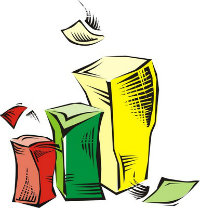
At the end of each period, I put a binder clip on the group in the tray, and I remove the entire stack at the end of the day. Since I began using the Magic Tray over a decade ago, I have never lost a student’s assignment, and I always have them grouped by class period. Easy for me, easy for them.
Instructional Practices
When I began teaching, one question that came up quite often was, “What are we doing today?” I used to reply with the mysterious “You’ll see” or something similar until I realized that they would get frustrated or it would appear to them as if I didn’t know and was making it up as I went along.
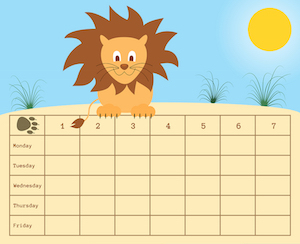
For longer-term assignments I provide students a calendar with all the dates on it at the beginning of the project. I also post a copy online for them to access from home in case they left it at school. If I need to adjust the schedule due to special events, it happens easily and they all stay in the loop. For my very busy students, allowing them visibility into where we are going helps them plan around events in their own lives.
Stuff that works
These are just a few of the basic routines I have implemented in my classroom. You can probably see the common theme: these are designed to decrease my workload and stress level as well as provide structure for students and eliminate a loss of instructional time. That is how I determine most of the routines I use.
By staying true to your personality and developing routines that proactively eliminate your sources of stress, you and your students will have a happier, more productive year.
Read More Advice for Beginning Teachers
If you have a helpful routine to share, please do so in the comments! We can all use more great ideas.





























Another “friend of MiddleWeb” with great ideas about classroom routines and procedures is Cossondra George. Back in 2012, we did an interview with Cossondra in which she shares some favorite techniques. http://www.middleweb.com/1282/the-goddess-of-good-advice/
We’d love to hear a favorite of yours!